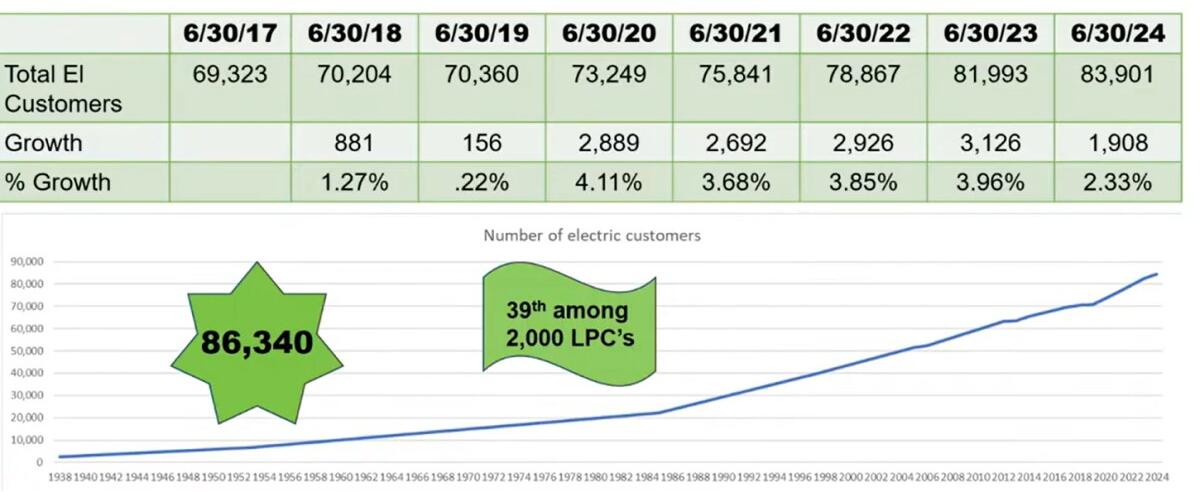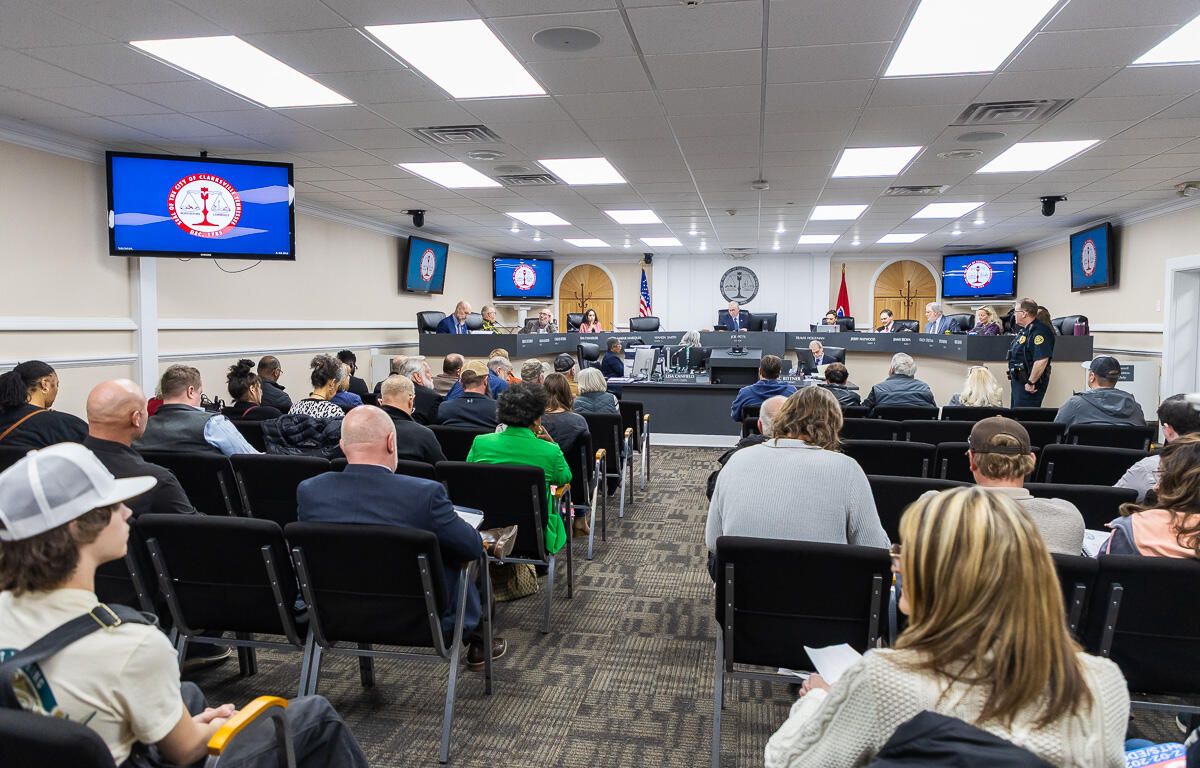CLARKSVILLE, TN (CLARKSVILLE NOW) – With the growth of their electricity customer base, CDE Lightband is needing to build additional infrastructure. In the past, they’d been able to build substations out of ongoing revenue and existing cash. However, that revenue is no longer keeping up with expenses, and they’re now looking to bond issues and a 1% electricity rate increase.
“Doing the bond issue, it is going to cost us an additional $1.8 million, so to pay for that, we are looking at doing about a 1% electric rate increase,” CDE Lightband General Manager Brian Taylor told the City Council at their executive session meeting on Thursday. Taylor said they have two options for the additional costs:
- They can borrow and do a bond issue, with a 1% rate increase.
- They could try to pay for the costs out of revenue, with a 17% rate increase.
“While we never take raising rates lightly, a modest increase of approximately 1% is necessary in October for our upcoming debt payment of $1.8 million to cover a new bond issue,” Taylor later told Clarksville Now. “The bond proceeds will allow us to continue our crucial growth initiatives. This includes the construction of two additional substations, system improvements to handle Clarksville’s growth, and further enhancements to the resilience of our electric distribution system through smart grid technology.
“Issuing a bond will allow us to fund these essential capital projects, preventing a far more significant rate increase of around 17%,” Taylor said.
Growth for CDE from 2017 to 2024
The resolution authorizes the issuance and sale of electric system revenue bonds not to exceed about $47 million.
“We currently have 13 substations on our system,” he said. “We have two (new) substations, the Airborne substation and Connell Farm – one’s on Exit 8 and one’s on Tiny Town Road – that should be online in May,” Taylor said. “This is to handle the growth of Clarksville. As we continue to grow, we’re building more substations to serve the load, but also for redundancy and resiliency of our system.”
Taylor highlighted the growth CDE Lightband has experienced from 2017 to 2024.

Just last year, they had 83,000 customers, and as of this month, they have 86,000 customers. This past week, CDE Lightband was recognized by the American Public Power Association as the 39th largest public power provider in the United States.
Taylor presented a slide on operating costs increasing and said that with building additional infrastructure, along with the growth, CDE Lightband’s power costs continue to rise.
“We are currently paying TVA about $140 million a year for our power,” he said. “You can also see our maintenance and our growth to our distribution system continues to grow. This is the distribution, transmission and maintenance of our system. Last year, we spent $50 million to handle the growth of our system.
“That was just coming out of our normal expenses, but … you can see the capital expenses continue to rise as well. Building those two substations that we built back in 2009, we built two substations that were $5 million apiece. We built the Dalton Smith substation for $7 million. The two substations that were just completed are a little over $8 million. The next two substations are going to be about $10 million each. So, you can see the rising cost of materials to build our system,” Taylor said.
Taylor also presented the different costs for transformers and compared the cost from pre-COVID 2019 to 2023, which is more than a $8.5 million difference.
He said most of CDE’s equipment has a 30-40 year lifetime. “So, by doing the bond issue, the people that are using the product will actually be paying for it. Rather than the customers today paying for products they’ll use 30 years down the road.”
The 1% increase will strictly be on electric usage, not broadband nor internet. “It’ll average about $2-$4 (on each bill), depending on the usage,” Taylor said. He said the 1% increase will also not go into effect until October, after a study, getting approval from CDE Lightband’s board, as well as the TVA.
Smart grid at work
Taylor said building out the smart grid technology across their entire system can’t be done overnight. He said it is something they allocate toward expanding each year.
“With our fiber system that we have, any device that we put onto our distribution system must have two-way communications,” Taylor said. This allows CDE Lightband to communicate from their main office, while having access to open and close breakers.
Taylor gave an example of the smart grid technology capabilities. “We had an outage at Breaker 964 at the East substation. When a tree limb hit on the line, the breaker opened up, 689 customers were without power,” he said. “Within nine seconds, the system automatically reduced that down to 122 customers. Before we could roll a truck, or get out of the parking lot, we were automatically down from 689 to 122. That’s one of the reasons we’re investing in smart grid technologies.”
The City Council is set to vote on the resolution at the next regular session meeting, scheduled for Thursday, May 1.





